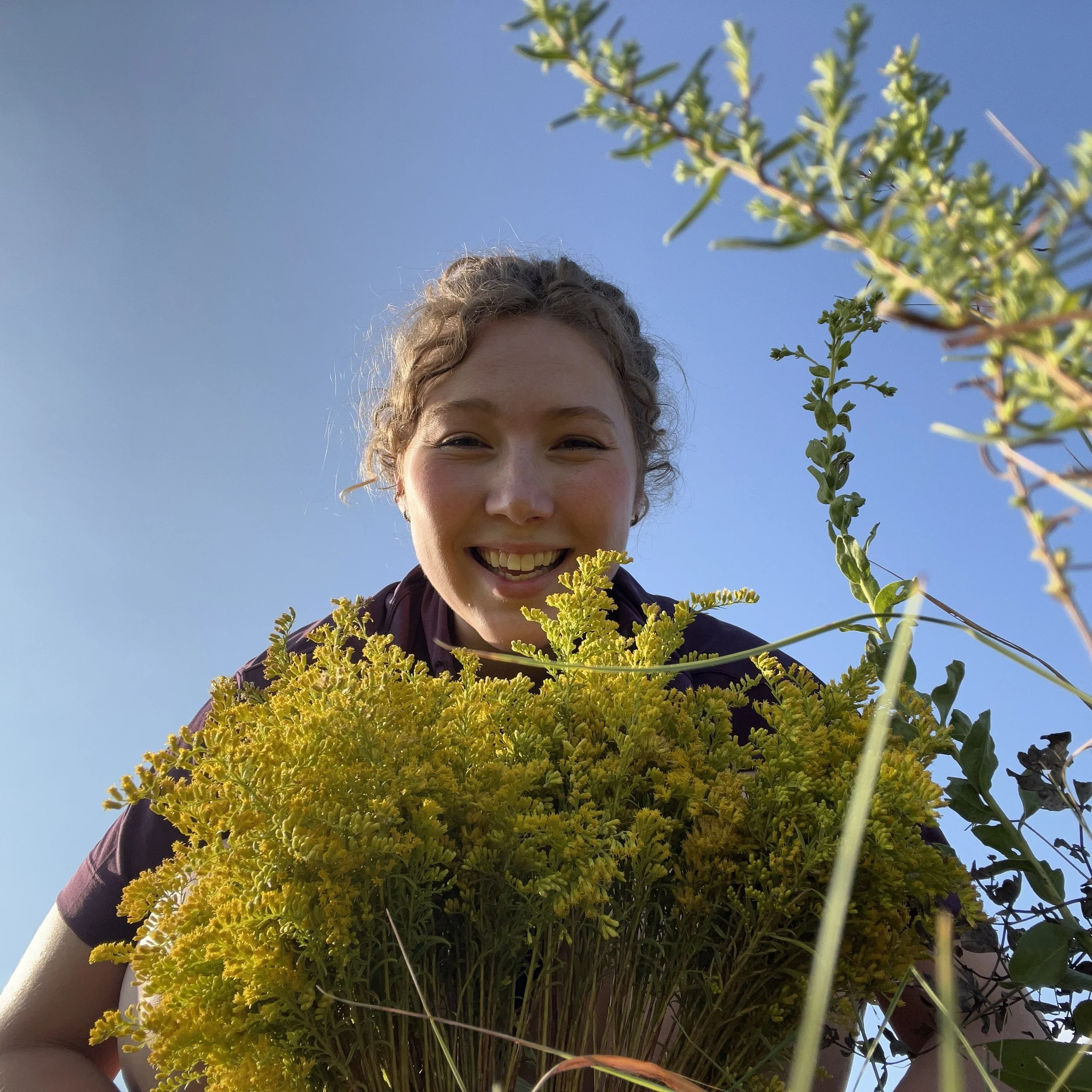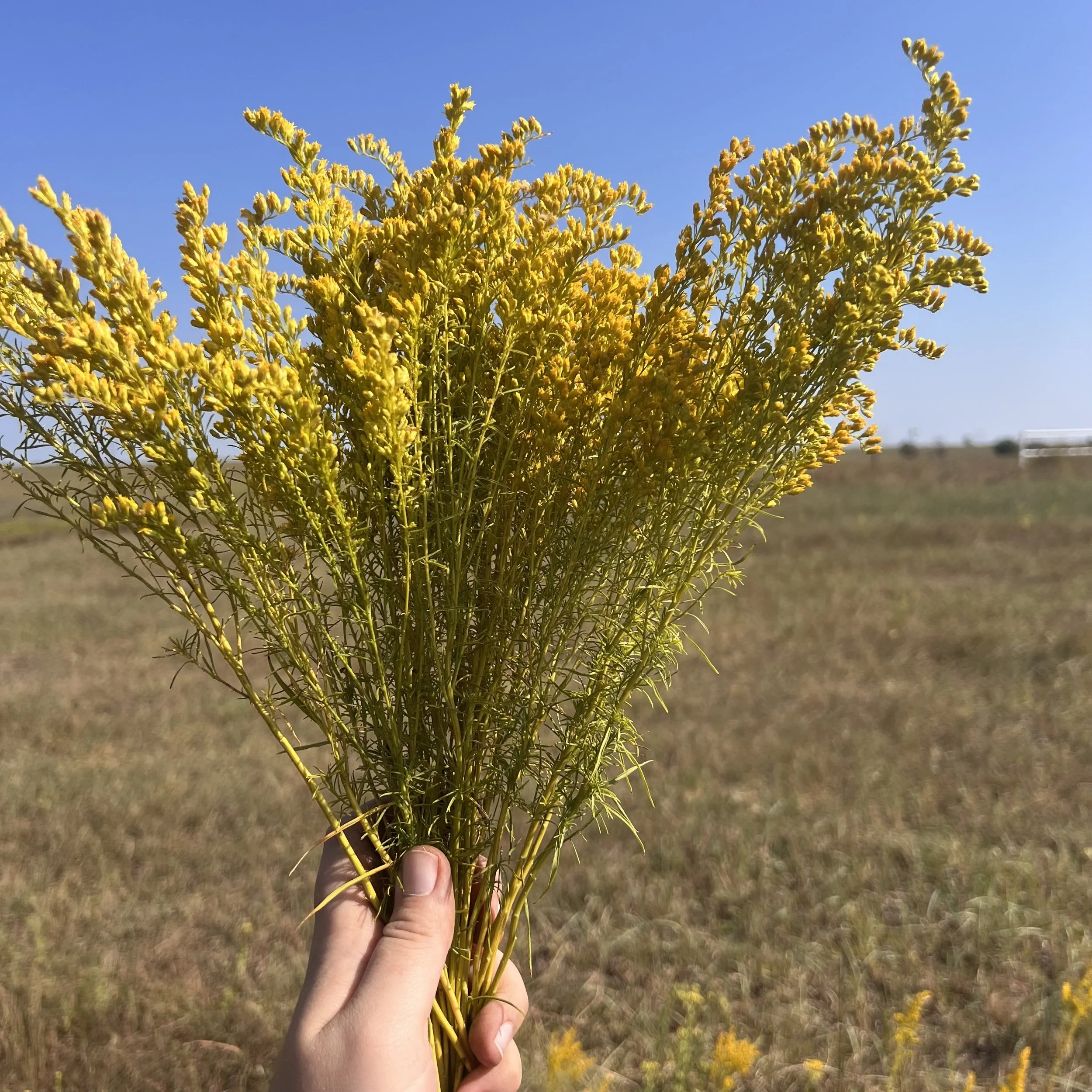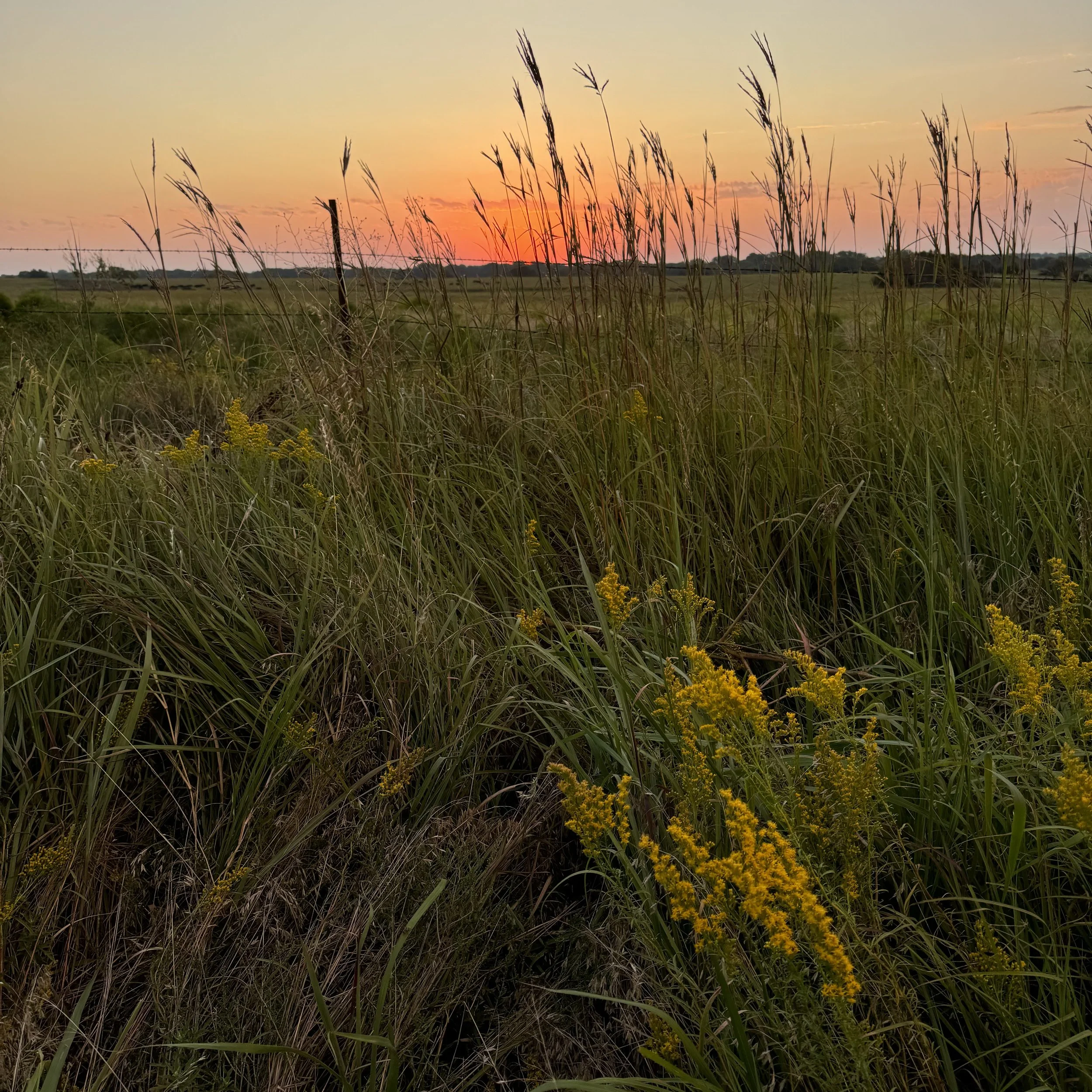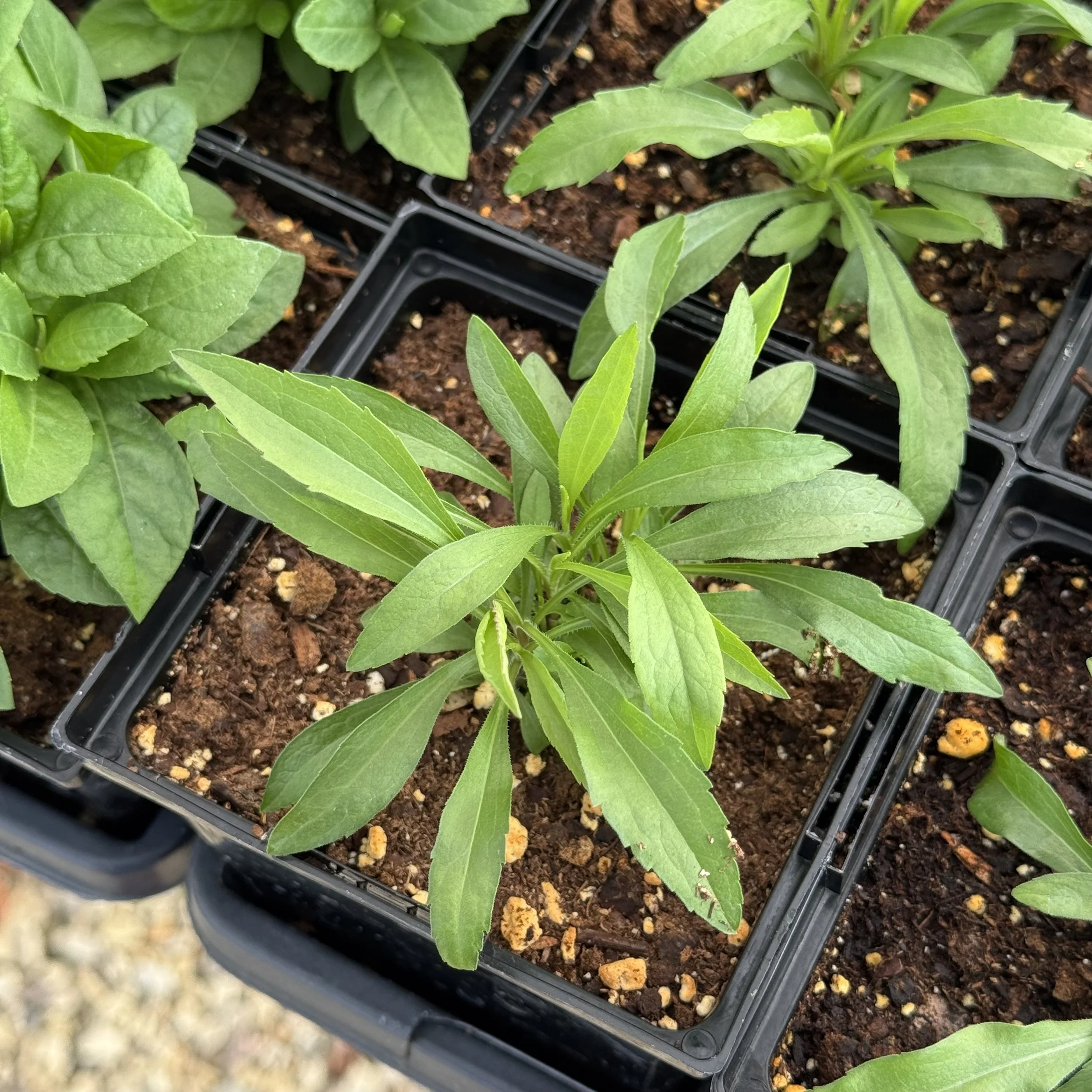Solidago missouriensis
Missouri Goldenrod
-
Provide full to part sun (4+hrs/day).
This native was collected from the Flint Hills region of the Kansas prairie. Soil type is clay to loamy clay. This plant should do well in similar soil and can tolerate rocky areas as well.
Native to hardiness zone 6b (-5 to 0 °F).
-
Goldenrod can tolerate droughty conditions once established. During the plant’s first 1-2 years, water deeply when the top 2-4 inches of soil is dry..
Goldenrod does not need extensive nutrient support. If you know that your soil is poor, consider adding a small amount of compost at planting, working it evenly into the surrounding top 6-8” of soil.
If you know that your soil has acidic leanings, consider amending with lime. (Most Kansas soils don’t have this issue.)
-
As a perennial, goldenrod is best established after soil has warmed in May/June or 4-6 weeks before our first frost in the fall.
-
Late Summer (July-October)
-
Unlike its cousin, Canadian goldenrod, Missouri goldenrod is much shorter. Reaching around 2’ tall. Goldenrod is perennial, forming a taproot and spreading year to year by seed.
-
Goldenrod is often blamed for seasonal pollen allergies when in reality, ragweed is largely to blame as it blooms profusely at the same time.
Not only is it ornamental, goldenrod dries nicely to use in decor throughout the home.






